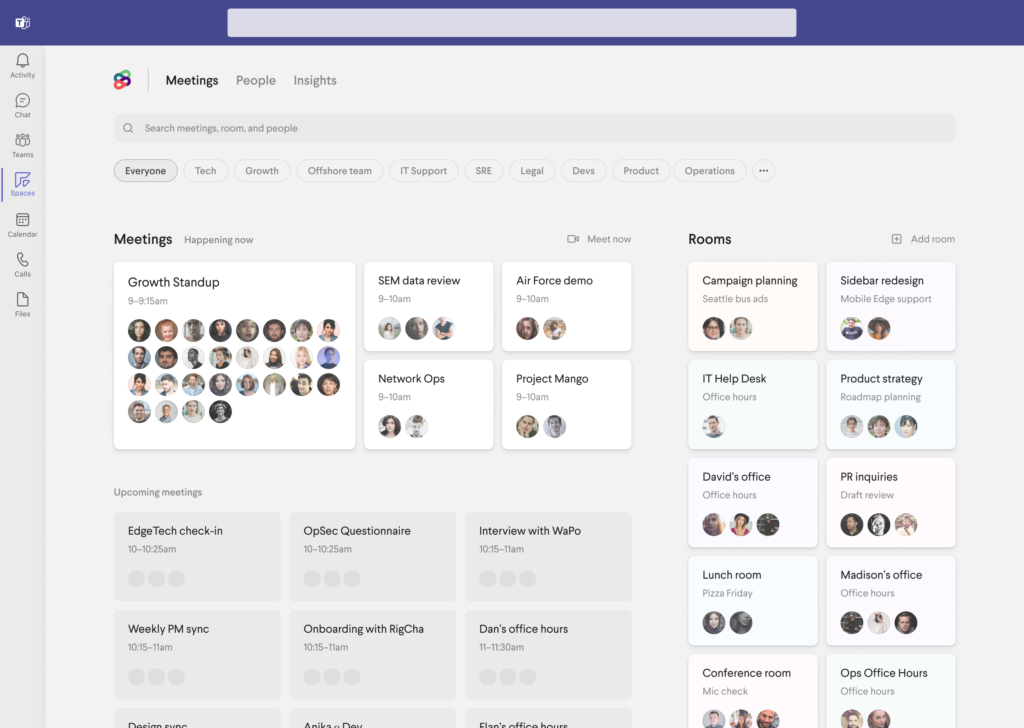As more organizations look to incorporate hybrid and remote work into their workflows, virtual office integrations have become an increasingly popular option. With virtual office integrations, organizations can offer their employees increased flexibility while reducing costs associated with traditional office spaces. In this blog post, we will explore virtual office integrations’ benefits for both channel partners and their customers and why they should include them as a key part of a modern business strategy.
What is a virtual office integration?
A virtual office integration enables employees to work together more effectively when they are not physically together. These integrations are typically bolted onto traditional meeting and communication software, such as Microsoft Teams, enhancing the platform’s existing capabilities. Think about the different interactions you have experienced when working in an office versus working remotely. Traditional meeting software is very limited in terms of visibility and insight into co-workers’ daily activity and enabling ad-hoc collaboration. Integrations can allow employees to hold more effective and engaging, scheduled and unscheduled virtual interactions that better replicate the in-person experience.
Benefits to Customers
As a channel partner, you understand that keeping your customers happy is essential for building long-term relationships with your customers to drive growth. By offering a virtual office integration, you can help your customers reduce friction, increasing customer satisfaction and loyalty. When offering a virtual office integration, highlight the following benefits:
Increased Flexibility
A frequently cited benefit of working remotely is the increased flexibility it gives employees. Virtual office integrations can help fuel this flexibility by providing a greater toolkit of real-time collaboration tools, more accurate statuses, and eliminating the silos that can arise during remote work, allowing teams to work together more effectively.
Access to Top Talent
Whether your customer is currently working remotely or is transitioning to a remote or hybrid workstyle, a flexible work environment will open up the opportunity to hire top talent from around the world. Recent data from LinkedIn showed that although remote jobs represent less than 20% of jobs posted, these listings accounted for over 50% of all applications. As the labor market continues to remain tight, employers looking to hire top talent face increased pressure to maintain or expand their remote work policies. A virtual office integration can ease communication across locations and time zones and increase productivity during core working hours, allowing organizations to hire the best talent from around the world.
Cost-Effective Solution
One of the most significant advantages of virtual offices is their cost-effectiveness. According to Global Workplace Analytics, “a typical employer can save about $11,000 a year for every person who works remotely half of the time.” Virtual office solutions and integrations can eliminate costly expenses such as rent and overhead costs, justifying the integration cost.
Minimize Learning Curves
Out-of-the-box virtual office solutions offer the same benefits as integrations, but they can pose a challenge for customers in terms of learning and adaptation. Integrations, on the other hand, can be much more user-friendly as they can blend seamlessly into existing workflows and systems. According to a 2021 Deloitte survey, poor integration across applications is seen as one of the main barriers to the effective application of tech, with 45% of respondents ranking this as one of their top three issues. Offering customers a virtual office integration rather than a new solution can help make the transition more manageable for employees, ultimately resulting in a more seamless and productive work environment.
Benefits to Partners
Upsell Current Product Offerings
According to the book Marketing Metrics, businesses have a 60-70% chance of selling to current customers, compared to the probability of selling to a new customer at 5-20%. Virtual office integrations can provide a great opportunity to upsell or cross-sell to your existing customers. Providing bundles with virtual meeting platforms or other complementary products can offer your customers a wide range of valuable benefits while increasing your recurring revenue streams.
Increase Customer Retention
As companies continue to navigate the new realities of the post-pandemic world, virtual offices have emerged as a practical solution to optimize remote and hybrid work. With many companies looking for solutions that can help them stay connected and produced while not physically together, offering cutting-edge virtual office integrations to your customers can help position you and your business as a leader in the industry. Stay on top of your customers’ current problems to help increase satisfaction and loyalty long-term.
Differentiate and Grow Your Business
One of the best ways for partners to maximize their ROI is to diversify their portfolio mix. By adding virtual office integrations to your existing portfolio, partners can expand their product offerings, target new markets, and reach a wider range of customers. Virtual office integrations are a valuable product add as the remote and hybrid work models continue to grow. A Gallup survey in June 2022 found that 8 in 10 people work in a hybrid or remote environment, leaving only 2 in 10 people working entirely on-site. This means there is a significant market for virtual office integrations, and partners who offer this solution can capitalize on this trend while reducing dependence on a single product offering. Since most virtual office integrations are subscription-based pricing models, this also opens up the opportunity for recurring revenue streams, leading to greater stability for your business.
Empower Your Business Growth—Join the Frameable Partner Program
You’ve heard about the rise of remote and hybrid work models, but are you offering your customers the solutions they need to thrive in this new landscape? Our Microsoft Teams integration allows you to enhance your customers’ remote work experience while latching onto a software solution they are already familiar with. Connect with us today to expand your product offerings, increase retention, and boost your ROI.






















